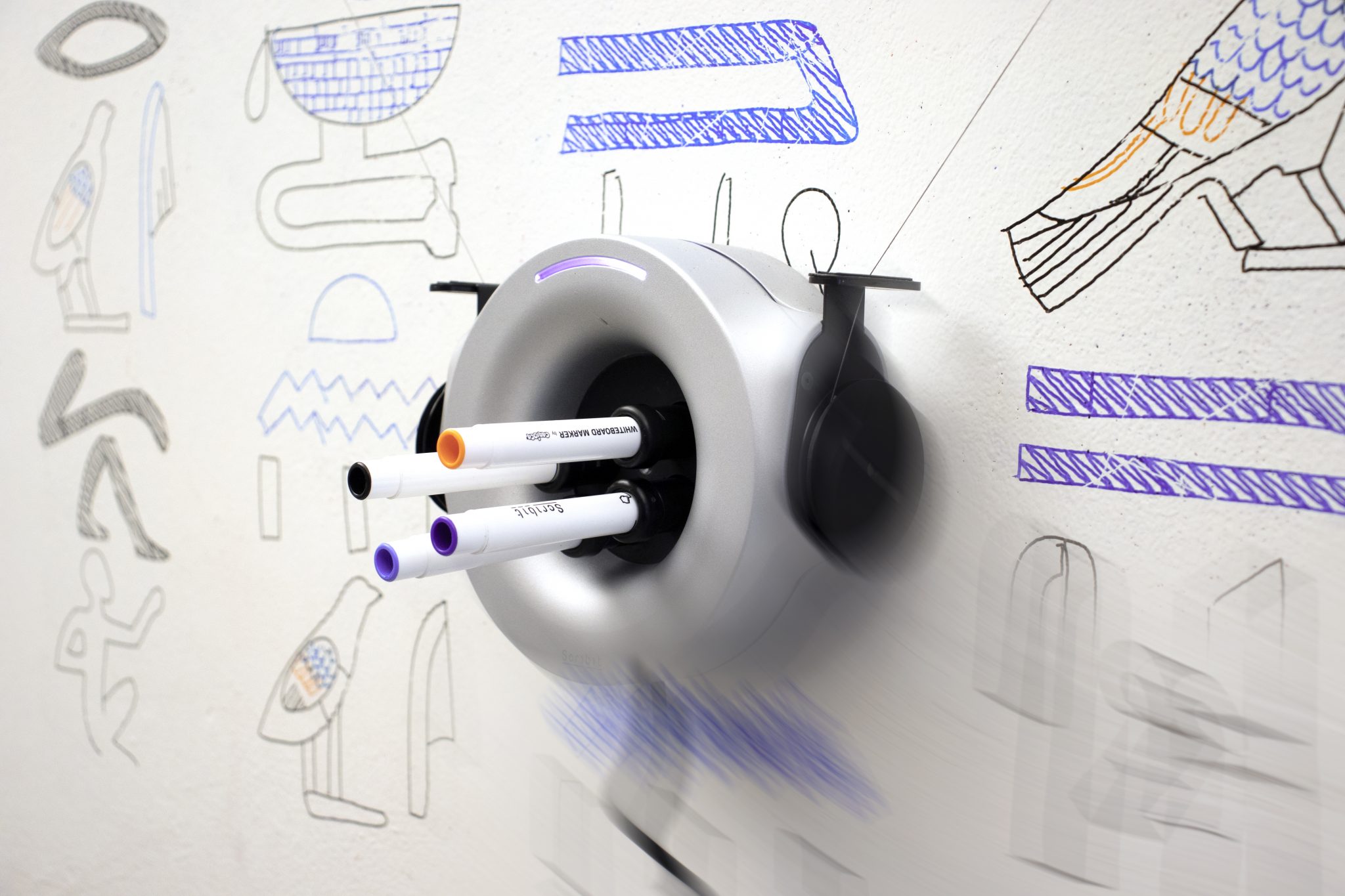Write & erase robot Scribit allows unprecedented access to the collection of one of Italy’s leading cultural institutions – Turin’s Museo Egizio, by enabling people to reproduce the museum’s masterpieces at home, directly onto their walls.
As nearly 90% of museums had to close their doors in the last two months because of COVID-19 (data by UNESCO), cultural institutions and curators worldwide are striving to experiment with new ways to engage with the public.

In response, write&erase robot Scribit is unveiling a project that allows unprecedented access to one of Italy’s leading museums – the Museo Egizio in Turin, which has recently reopened after the shutdown. Using Scribit, people will be able to reproduce some of the museum’s masterpieces directly onto their walls. The first exhibit available on Scribit’s app, starting from June 10th, will be a rare example of decorative wood burial endowment made with colored glass paste, discovered in middle-Egypt, and dating back more than 2,300 years.
The Museo Egizio in Turin, which hosts one of the world’s largest and most important collections of Egyptian art and archaeology, has been shut down since early March 2020, when the pandemic started to hit northern Italy. Since then, the museum’s director Dr. Christian Greco has promoted a series of digital initiatives to allow people to enjoy the Museum’s collection remotely. The museum finally reopened in early June, albeit with limited operating hours. The project by Scribit aims to support the reopening, while at the same time imagining new ways of enjoying and making museum collections more accessible.

The first exhibit available with Scribit from the Museo Egizio’s collection is a fragment of the Sarcophagus of Djedthotiuefankh, a rare example of decorative wood burial endowment, made with colored glass paste to obtain the inlaid figures from the “Book of the Dead”. This is part of the burial goods of Thot Djedthotiuefankh, brother of Petosiri, to whom the Tuna el-Gebel temple in middle-Egypt was dedicated in the IV century BC. The original testimony of the burial tradition is part of the collection by Bernardino Drovetti (1824), explorer and antiquities collector, to which most of the Museum’s 40,000 exhibits belong.






